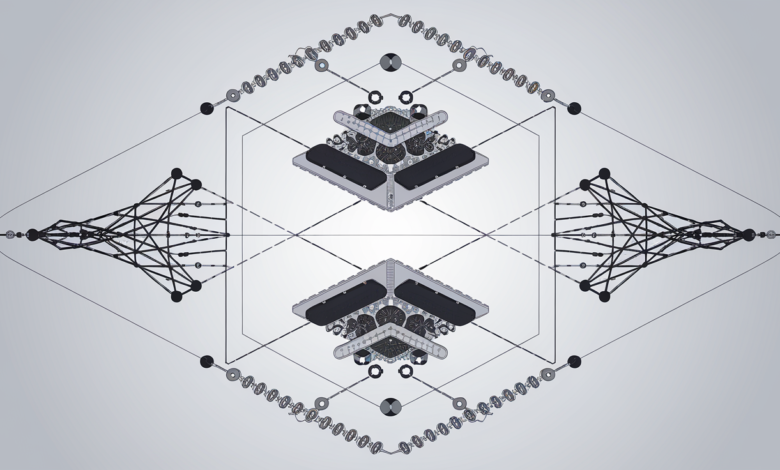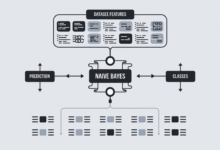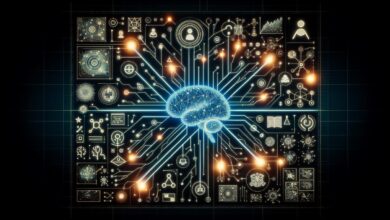
The Ultimate Guide to Dataset Preprocessing: Text and Image Data Preparation for Machine Learning
Table of Contents
Introduction to Dataset Preprocessing
Dataset preprocessing is the transformation of raw data into a clean, structured format suitable for machine learning algorithms. It’s essential because real-world data often comes with various issues:
- Missing values
- Inconsistent formatting
- Noise and outliers
- Different scales and ranges
- Unstructured content
Text Data Preprocessing
Text preprocessing involves converting raw text into a format that machines can understand. Let’s look at a complete example:
import pandas as pd
import nltk
from nltk.tokenize import word_tokenize
from nltk.corpus import stopwords
from nltk.stem import WordNetLemmatizer
import re
class TextPreprocessor:
def __init__(self):
nltk.download('punkt')
nltk.download('stopwords')
nltk.download('wordnet')
self.lemmatizer = WordNetLemmatizer()
self.stop_words = set(stopwords.words('english'))
def clean_text(self, text):
# Convert to lowercase
text = text.lower()
# Remove special characters and digits
text = re.sub(r'[^a-zA-Z\s]', '', text)
# Tokenization
tokens = word_tokenize(text)
# Remove stopwords and lemmatize
cleaned_tokens = [
self.lemmatizer.lemmatize(token)
for token in tokens
if token not in self.stop_words
]
return ' '.join(cleaned_tokens)
# Example usage
preprocessor = TextPreprocessor()
text = "The quick brown fox jumps over the lazy dog! It's amazing, isn't it?"
cleaned_text = preprocessor.clean_text(text)
print(f"Original text: {text}")
print(f"Cleaned text: {cleaned_text}")Key Steps in Text Preprocessing:
- Text Cleaning
- Converting to lowercase
- Removing special characters
- Handling contractions
- Removing HTML tags (if present)
- Tokenization
- Breaking text into individual words
- Handling sentence boundaries
- Managing multi-word expressions
- Normalization
- Lemmatization
- Stemming
- Handling abbreviations
- Feature Engineering
- TF-IDF transformation
- Word embeddings
- N-gram generation
Image Data Preprocessing
Image preprocessing involves transforming raw images into a format suitable for machine learning models. Here’s a comprehensive example:
import cv2
import numpy as np
from PIL import Image
class ImagePreprocessor:
def __init__(self, target_size=(224, 224)):
self.target_size = target_size
def preprocess_image(self, image_path):
# Read image
image = cv2.imread(image_path)
# Convert BGR to RGB
image = cv2.cvtColor(image, cv2.COLOR_BGR2RGB)
# Resize
image = cv2.resize(image, self.target_size)
# Normalize pixel values
image = image.astype(np.float32) / 255.0
# Add data augmentation
augmented_images = self.apply_augmentation(image)
return image, augmented_images
def apply_augmentation(self, image):
augmented = []
# Horizontal flip
flipped = cv2.flip(image, 1)
augmented.append(flipped)
# Rotation
rows, cols = image.shape[:2]
matrix = cv2.getRotationMatrix2D((cols/2, rows/2), 15, 1)
rotated = cv2.warpAffine(image, matrix, (cols, rows))
augmented.append(rotated)
# Brightness adjustment
brightness = cv2.convertScaleAbs(image, alpha=1.2, beta=10)
augmented.append(brightness)
return augmented
# Example usage
preprocessor = ImagePreprocessor()
image_path = "example_image.jpg"
processed_image, augmented_images = preprocessor.preprocess_image(image_path)Key Steps in Image Preprocessing:
- Basic Preprocessing
- Resizing
- Color space conversion
- Normalization
- Channel standardization
- Data Augmentation
- Rotation
- Flipping
- Scaling
- Brightness/contrast adjustment
- Random cropping
- Advanced Techniques
- Noise reduction
- Edge detection
- Background removal
- Object detection preprocessing
Best Practices and Common Pitfalls
Best Practices:
- Always Split Data First
from sklearn.model_selection import train_test_split
X_train, X_test, y_train, y_test = train_test_split(
features, labels, test_size=0.2, random_state=42
)- Scale Features Appropriately
from sklearn.preprocessing import StandardScaler
scaler = StandardScaler()
X_train_scaled = scaler.fit_transform(X_train)
X_test_scaled = scaler.transform(X_test)- Handle Missing Values Carefully
from sklearn.impute import SimpleImputer
imputer = SimpleImputer(strategy='mean')
X_train_imputed = imputer.fit_transform(X_train)
X_test_imputed = imputer.transform(X_test)Common Pitfalls:
- Data leakage during preprocessing
- Inappropriate handling of categorical variables
- Not considering the distribution of data
- Overfitting during preprocessing
Advanced Preprocessing Techniques
Feature Selection
from sklearn.feature_selection import SelectKBest, f_classif
selector = SelectKBest(score_func=f_classif, k=10)
X_train_selected = selector.fit_transform(X_train, y_train)
X_test_selected = selector.transform(X_test)Dimensionality Reduction
from sklearn.decomposition import PCA
pca = PCA(n_components=0.95) # Keep 95% of variance
X_train_reduced = pca.fit_transform(X_train_scaled)
X_test_reduced = pca.transform(X_test_scaled)Conclusion
Effective dataset preprocessing is crucial for successful machine learning projects. Whether you’re working with text or image data, following these best practices and avoiding common pitfalls will help you build more robust and accurate models.
Remember to:
- Always preprocess your data before model training
- Use appropriate techniques for your specific data type
- Validate your preprocessing steps
- Document your preprocessing pipeline
- Consider the computational cost of your preprocessing steps
By following this guide, you’ll be well-equipped to handle various preprocessing challenges in your machine learning projects.
What’s Next ?
In-case you have faced any difficult, please make a good use of the comment section i will personal be there to help you when you are stuck. also you can use the FAQs section below to understand more.
We think sharing practical implementation on real world example various machine learning skill is the key point to mastery and also solve various problem that affect our society we are intended to teach you through practical means if you think our idea is good. Please and please leave us a comment below about your views or request an article. as usual don’t forget to up-vote this article and share it.
Frequently Asked Questions (FAQs)
- What is data preprocessing in machine learning?
- Data preprocessing is the process of transforming raw data into a clean and structured format that machine learning algorithms can effectively utilize.
- Why is data preprocessing important?
- It enhances the quality of the dataset, improves model accuracy, reduces training time, and ensures better results by addressing issues like missing values and inconsistencies.
- What are the main steps in data preprocessing?
- Key steps include data cleaning, data integration, data transformation, feature scaling, and handling missing values.
- How do you handle missing values in a dataset?
- Missing values can be handled through techniques like imputation (filling in with mean, median, or mode) or deletion of records with missing entries.
- What is feature scaling and why is it necessary?
- Feature scaling involves normalizing or standardizing the range of independent variables to ensure that they contribute equally to model performance.
- What techniques are used for data cleaning?
- Techniques include identifying and correcting errors, removing duplicates, and filling in or removing missing values.
- How does data integration work in preprocessing?
- Data integration combines datasets from different sources into a coherent dataset while resolving any conflicts in data values.
- What is the role of outlier detection in data preprocessing?
- Outlier detection identifies and manages anomalous data points that could skew model results, ensuring more reliable predictions.
- Can automated tools assist in data preprocessing?
- Yes, many tools and libraries (like Pandas and Scikit-learn) offer automated functions to streamline various preprocessing tasks.







